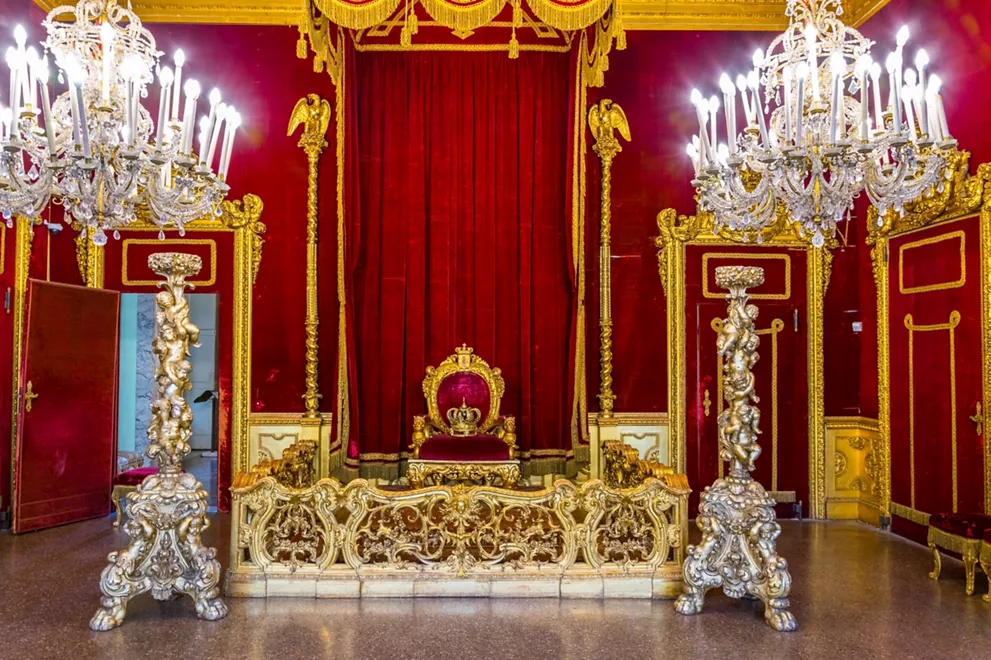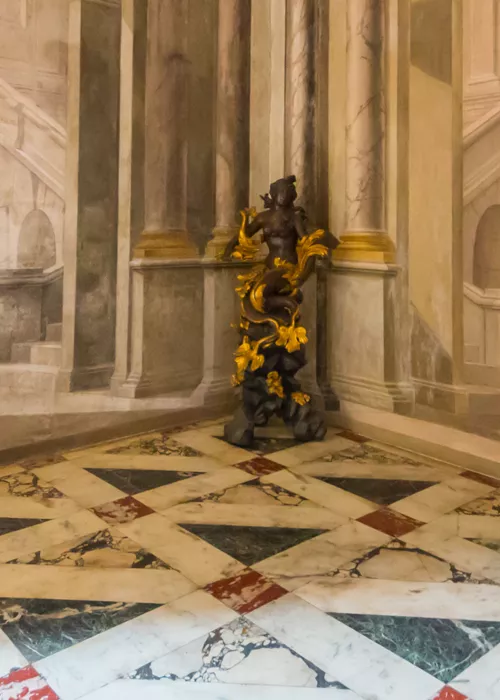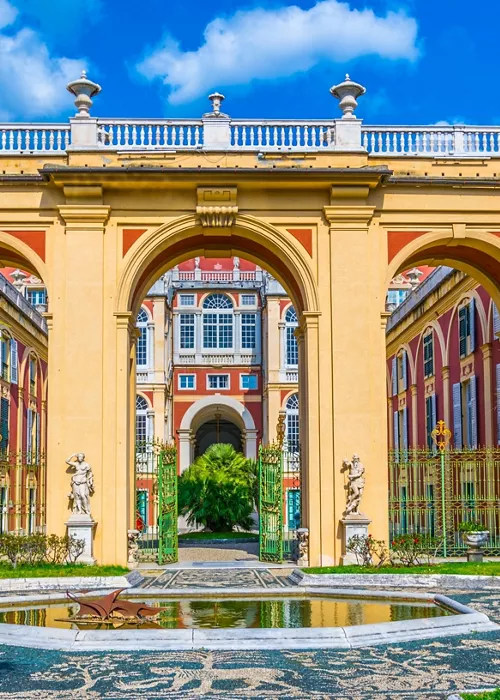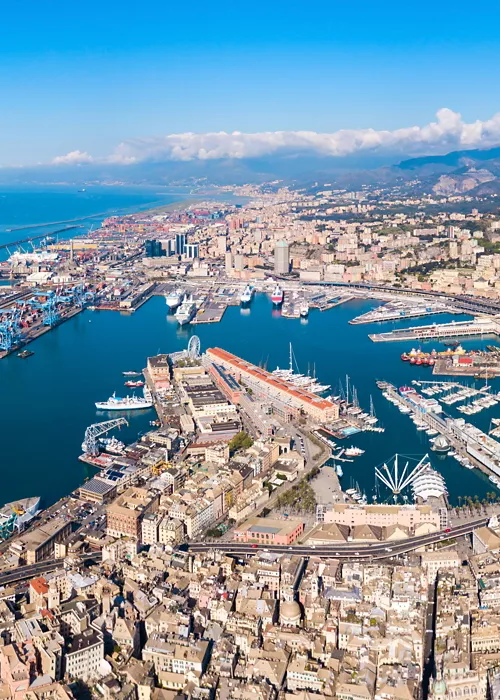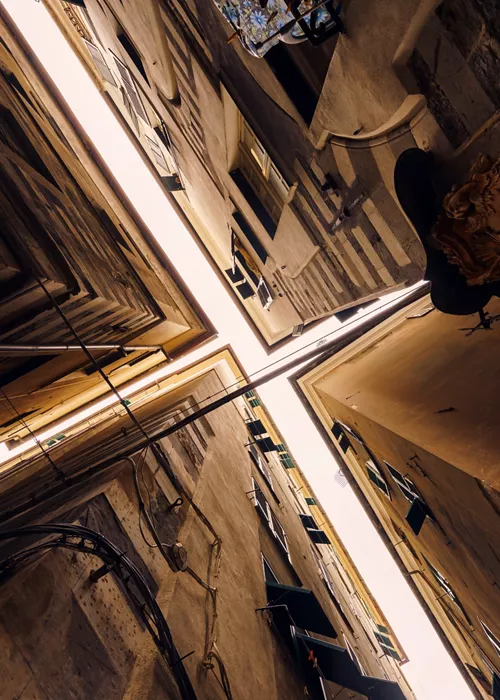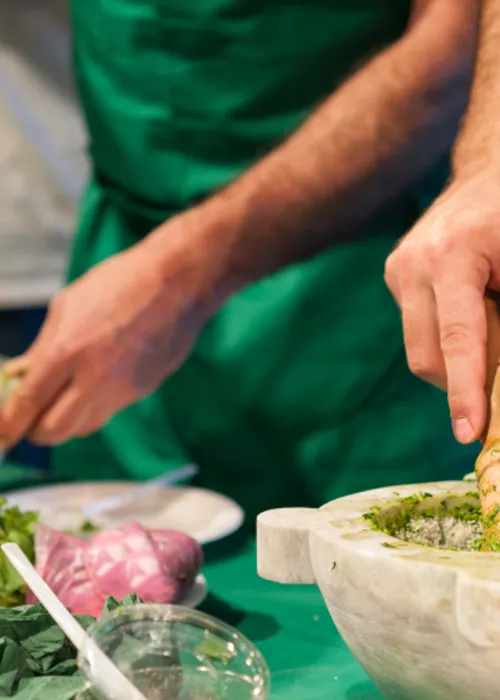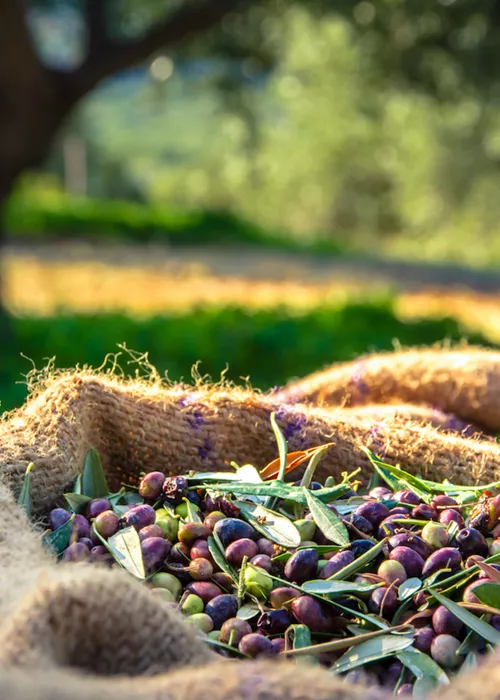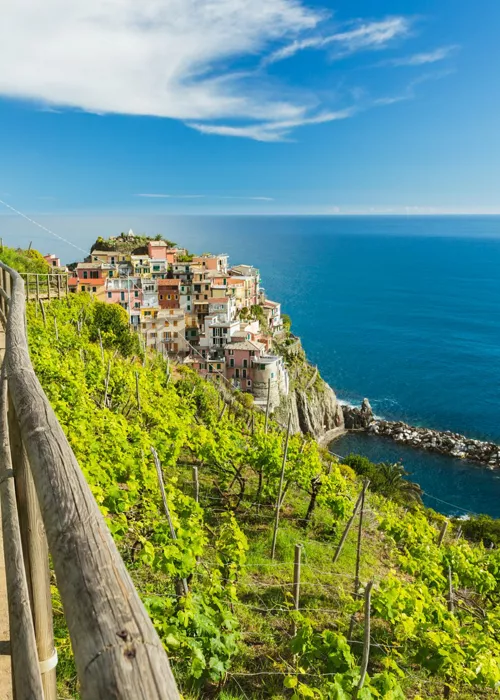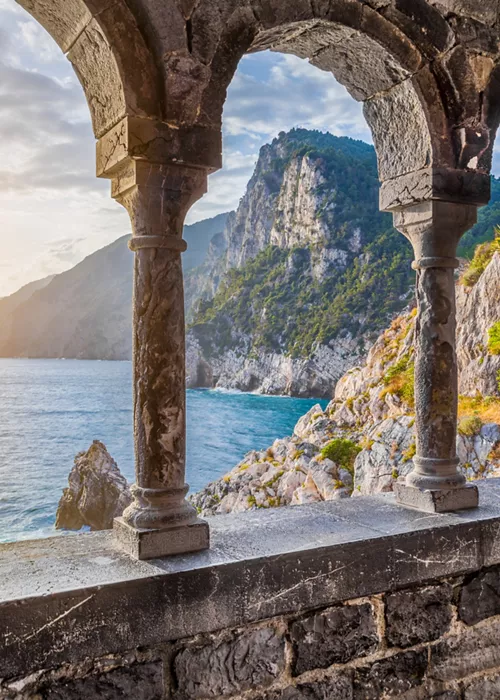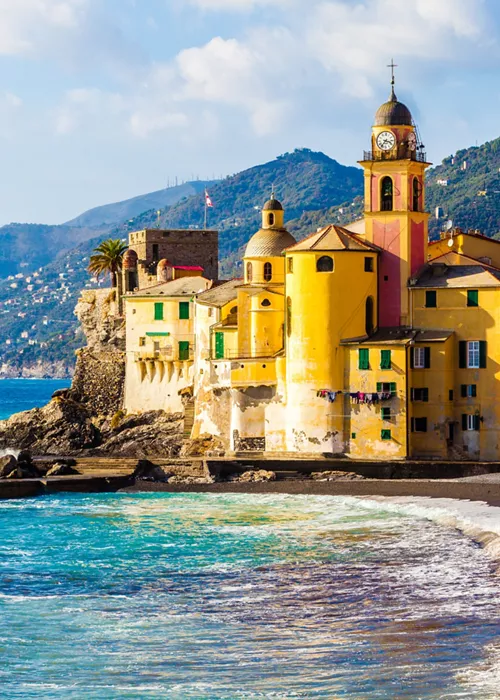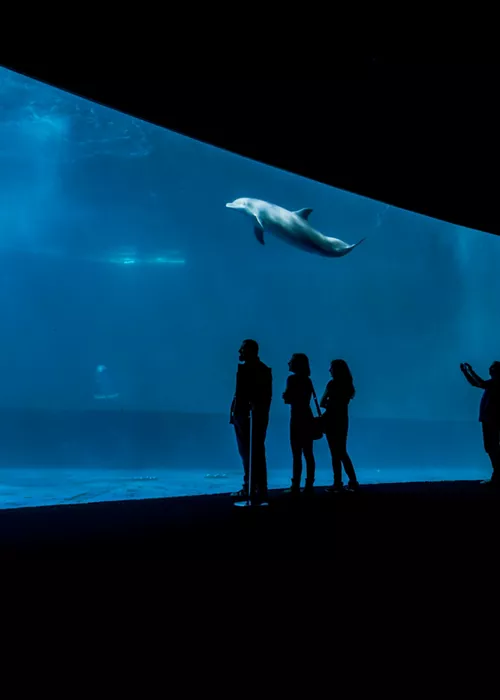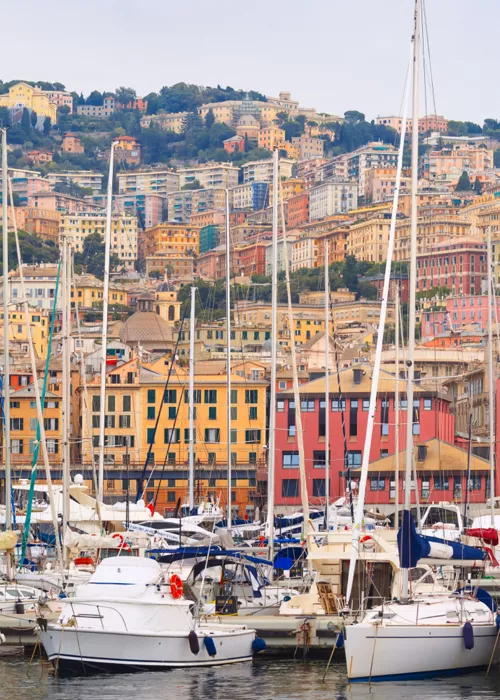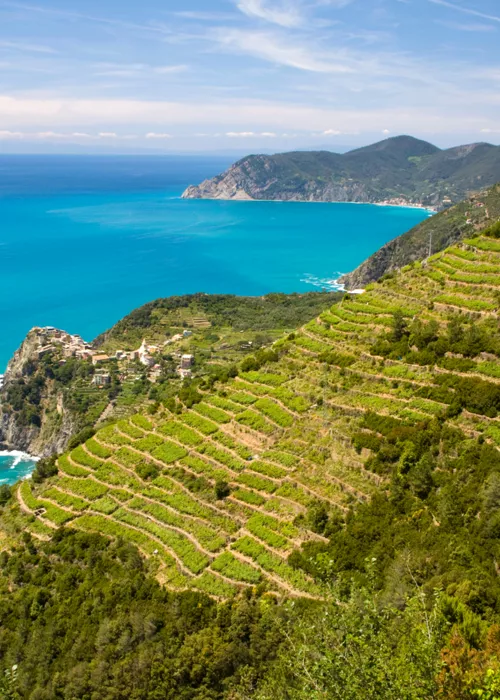Genoa and the splendour of Palazzi dei Rolli
4 minutes
Thanks to its strategic position, Genoa established close relations with the Greek, Etruscan and Punic worlds, but the city's great expansion began after the year 1000. As a powerful maritime republic, Genoa was the protagonist of a public aristocratic residential project to build a system of new streets and palaces.
The historic centre was already densely populated and limited by the conformation of the urban area, the sea on one side and the Apennine mountains on the other. The solution found was ingenious and destined to influence urban architecture for centuries: the new palaces were articulated on several levels, with loggias, courtyards of honour and a tendency towards vertical architectural development. This was how Palazzi dei Rolli was conceived, built along the Strade Nuove that still today make Genoa a true architectural jewel to be admired.
Are you ready for the journey into Renaissance and Baroque luxury that only Genoa can offer?
What and where are the Palazzi dei Rolli [Italian for Palaces of the Lists]?
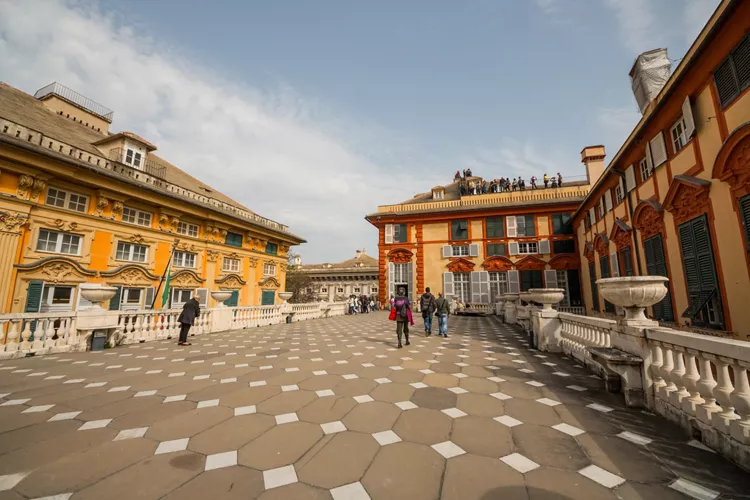
The Palazzi dei Rolli are an open-air museum in the centre of Genoa, a collection of buildings built between the 16th and 17th centuries to house the most powerful aristocratic families of the Republic of Genoa and to show the world the grandeur of the city.
The name Palazzi dei Rolli is linked to their origin. These elegant palaces were included in the city registers called “rolli” and the families living in them had the commitment and honour of hosting, by drawing lots, illustrious travellers passing through Genoa such as princes, ambassadors and prelates.
The construction of the Palazzi dei Rolli also led to a reconfiguration of the street system in the historical centre, with the creation of the so-called Strade Nuove, which today correspond to Via Garibaldi, Via Cairoli, Via Bensa and Via Balbi.
It is along these streets that you can take a look at them today, from the 17th-century Palazzo Rosso to the 16th-century Palazzo Bianco and Palazzo Doria Tursi.
The history of the Palazzi dei Rolli
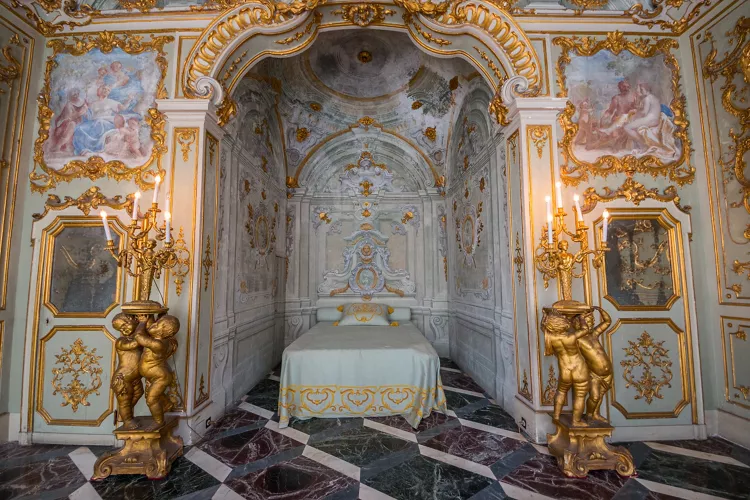
The Republic of Genoa reached the height of its power with Admiral Andrea Doria, to whom we owe the great urban restructuring of Genoa. As part of this reconfiguration of the city, “rolli” were issued through which residences were chosen to host distinguished guests on state visits.
The “rolli” were established from 1576 onwards with the palaces catalogued according to their prestige and capacity to accommodate visiting dignitaries.
All the Palazzi dei Rolli had certain characteristics in common: the spectacular staircases at the entrance, the courtyards and loggias overlooking the gardens, the interiors decorated with stuccoes and frescoes.
Among the illustrious visitors to Genoa in 1607 was the painter Pieter Paul Rubens, hosted by Vincenzo I Gonzaga. Rubens was so impressed by the Palazzi dei Rolli that he gave vent to his art and produced Palazzi di Genova, a two-part anthology comprising 139 prints of plans, sections and elevations of the most beautiful buildings in Genoa, drawn or bought by Rubens himself.
Why Palazzi dei Rolli became a UNESCO site
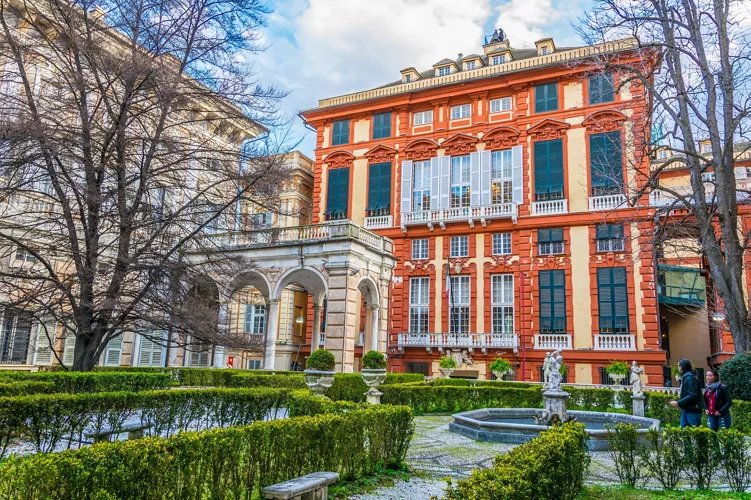
In 2006, UNESCO declared 42 of the 163 Palazzi dei Rolli in Genoa a World Heritage Site because, together with the Strade Nuove, they represent the first European example of urban development projects with a unitary structure, planned by a public authority and associated with a peculiar system of public accommodation in private residences.
Those Palazzi dei Rolli that became a UNESCO site were selected on the basis of two criteria: to have exerted a considerable influence on developments in the field of architecture and urban settlements and to still represent an outstanding example of an architectural ensemble illustrating a significant period in human history.
Palazzi dei Rolli worth a visit
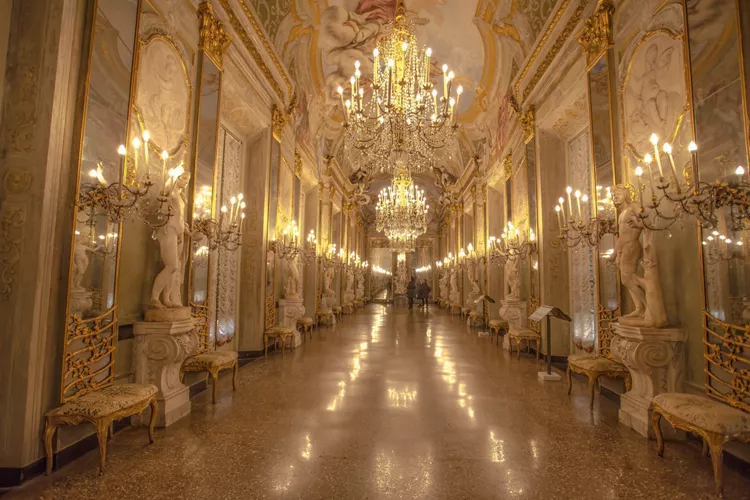
Are you ready to be amazed by the Renaissance and Baroque splendour of Genoa? Here follows why and which ones to visit among the 42 Palazzi dei Rolli part of the UNESCO site.
● Palazzo Rosso is located at 18 Via Garibaldi and houses the first section of the Strada Nuova Museums with the Brignole-Sale art collections and decorations from the 17th and 18th centuries.
● Palazzo Bianco, built between 1530 and 1540 and also known as Palazzo di Luca Grimaldi, houses the section of the Strada Nuova Museums dedicated to Italian, Flemish and Spanish painting between the 16th and 18th centuries. You cannot miss Caravaggio's Ecce Homo and Giorgio Vasari's Portrait of a Florentine Gentleman.
● Palazzo Doria-Tursi is part of the same museum centre and is also the seat of the Genoa City Council. It is the most majestic palace on the historic Strada Nuova with two large gardens and spacious loggias on two floors. Inside, you can appreciate the penitent Magdalene sculpted by Antonio Canova.
● Palazzo Balbi, located on the so-called street, is the seat of the humanities departments of the University of Genoa. A visit here is a must to see one of the most important examples of Genoese Baroque, the fresco cycles signed by Valerio Castello, Domenico Piola and Gregorio De Ferrari.
● Palazzo Lomellino is among the most spectacular Palazzi dei Rolli in Genoa. Designed by Giovan Battista Castello and Bernardo Cantone, the palace is worth a visit for its double terraced roof garden and the fresco cycle by Bernardo Strozzi.
● Since you are in Genoa, you must visit not only the famous Doge’s Palace, which hosts important art exhibitions on the piano nobile, but also the National Gallery of Palazzo Spinola. Here one can admire Antonello da Messina's Ecce Homo and Antoon van Dyck's Portrait of Ansaldo Pallavicino as well as the first floor, which retains the appearance of a Genoese aristocratic residence from the first half of the 17th century.
● If you love museums, you should also pay a visit to the Museo di Palazzo Reale, the largest 17th-18th century architectural complex in Genoa with its representative interiors still intact.
● A visit to the Palazzi dei Rolli cannot be said to be complete without Palazzo Tobia Pallavicinowhich overlooks Piazza del Ferro and is decorated with frescoes from the late Renaissance and late Baroque periods in Genoa.

